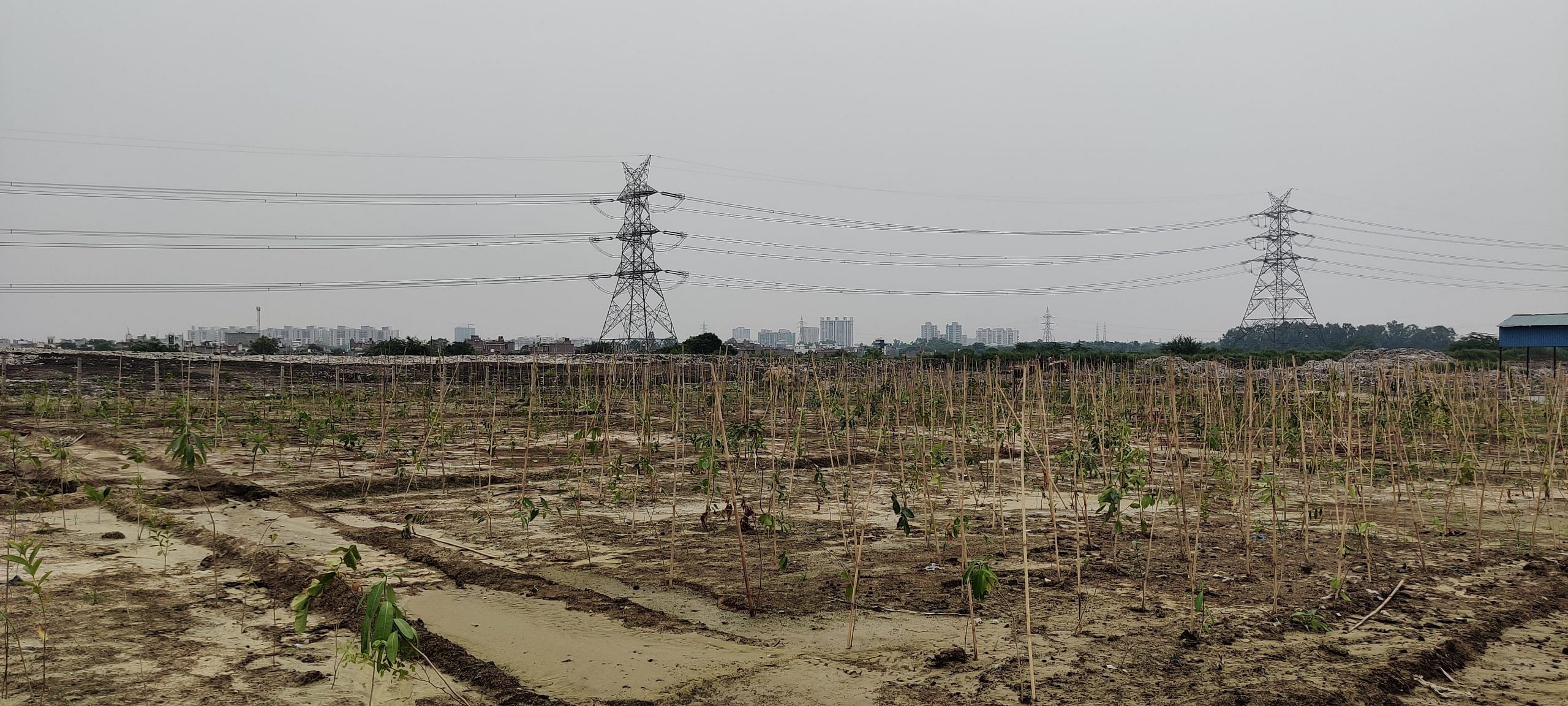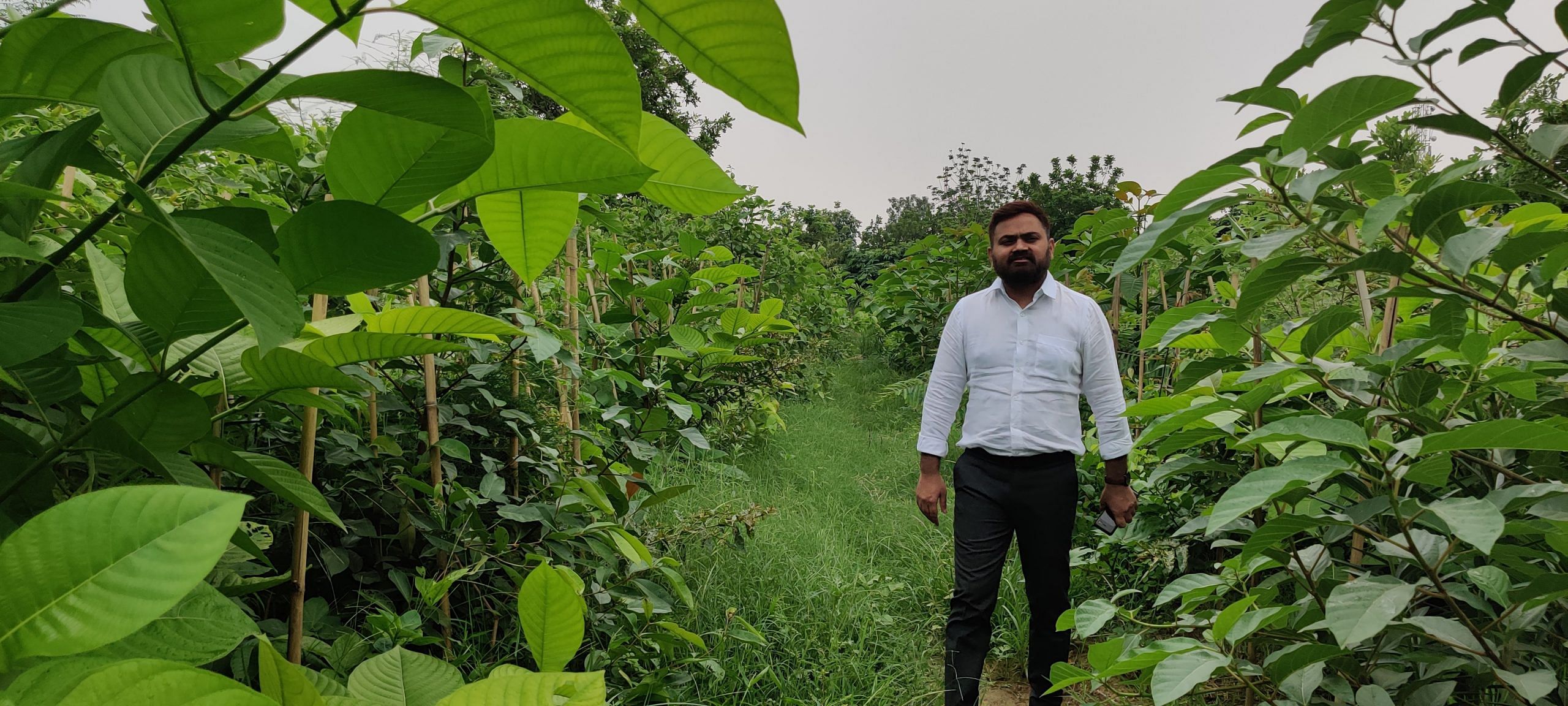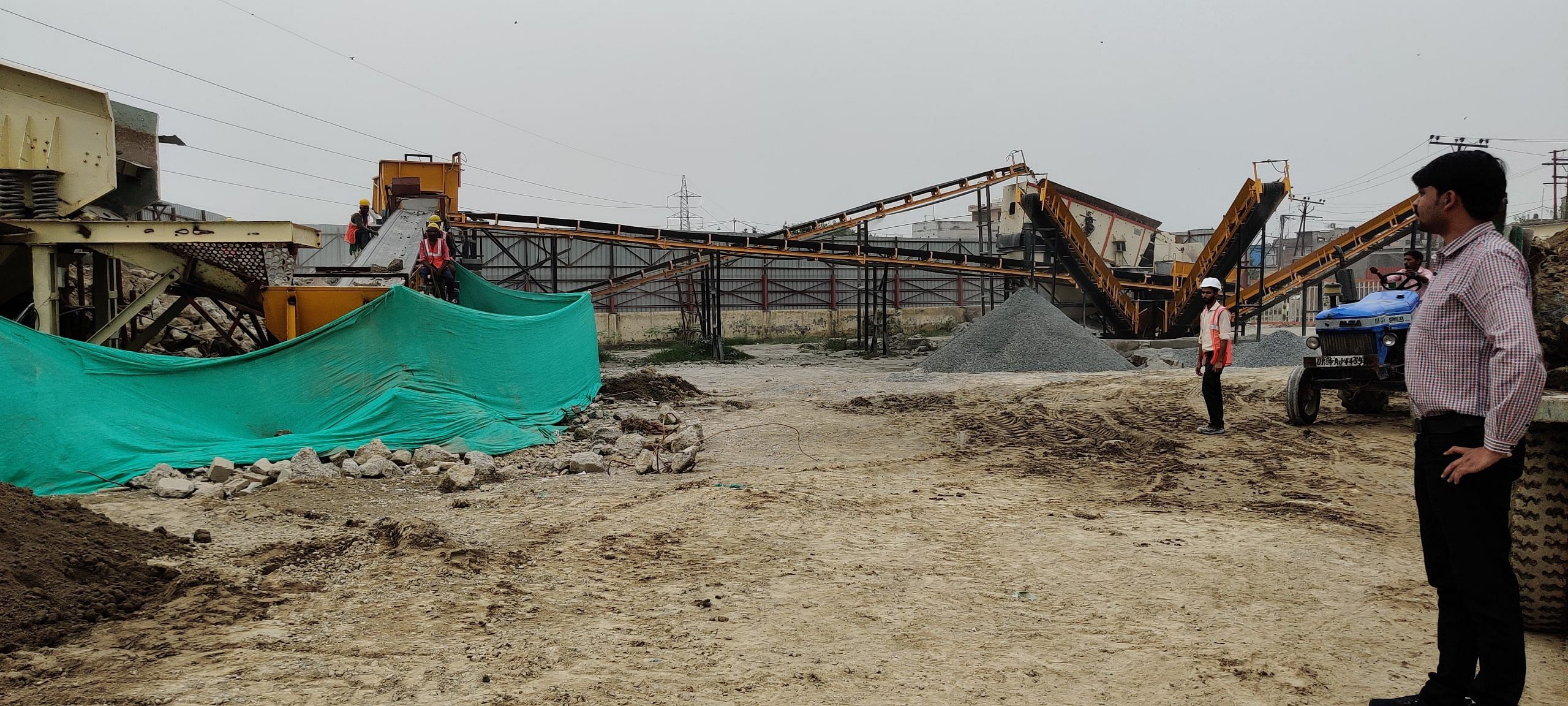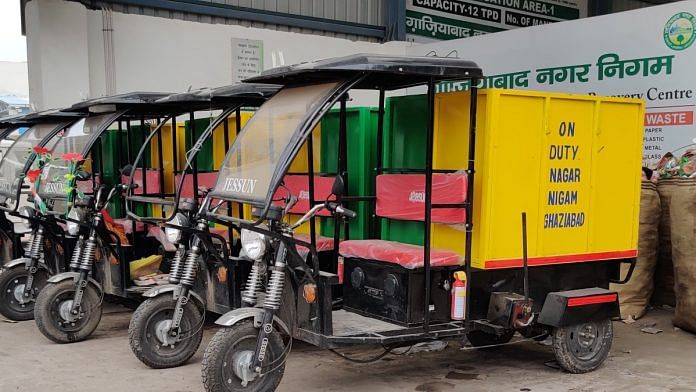For too long, Ghaziabad remained in the shadows of Delhi. It was the poorer, lesser, messier cousin of NCR’s hipper suburbs such as Gurugram and Noida. Western Uttar Pradesh’s badland image did not help either. So, when Ghaziabad Municipal Commissioner Mahendra Singh Tawar added a new adjective to the town two years ago, it had a ring to it but sounded more like a contradiction — Gazab Ghaziabad.
Gazab, Urdu for marvellous, was more an aspiration and goal back then, not a report card. But two years is all that Tawar needed. Ghaziabad is now cleaner, greener, and re-building its brand value.
“When you say Zila Ghaziabad, it carries a negative connotation to it. That has changed now. Not to say that Ghaziabad has transformed into Singapore. Not yet. But we are rapidly moving up,” Tawar told ThePrint during recent rounds of neighbourhood. “Earlier, we used to look up to cities like Indore and Surat for tips on cleanliness. Today, people are looking at Ghaziabad as a role model. Gazab Ghaziabad is not just a campaign, it is a reality now.”
At the heart of this grand Ghaziabad makeover is garbage. From waste collection to segregation to new bio-CNG plants and turning landfills into parks, this NCR suburb is changing, one swachh step at a time. And Tawar is taking the trash out.
Also read: Jahnvi’s emojis, Malaika at gym, Urfi at airport—Paparazzi’s secret handshake with Bollywood
Biodiversity, waste management — the big priorities
Two years ago, when Tawar assumed office in August 2020, a landfill as tall as a high-rise building, had occupied a 12-acre land in Siddharth Vihar. The towering garbage pile increasingly became a worrying concern as high-rise residential buildings began to occupy space nearby. “Ironically, the building adjacent to the mountainous garbage was named Fragrance,” said Tawar, as he headed towards a land filled with greens for as long as one could see.

It took an entire year to clear out the landfill following which, Tawar and his team used the Miyawaki method, a technique invented by Japanese botanist Akira Miyawaki for urban afforestation. The legacy waste was cleared using methods like bioremediation, following with Miyawaki plantation helps in keeping the area clean and green. Tawar’s team planted two to four trees per square metre which helps the forest grow in two to three years and is self-sustaining. It further helps lower the temperatures, minimise air pollution, attract local birds and create carbon sinks.
He replicated this method in the heart of the Kavi Nagar industrial area too where the plants stand as tall as 12 feet and more within a span of five months. Encouraging biodiversity and a green ecosystem is one of Tawar’s priorities as he emphasizes that nurturing the environment is the only way to combat alarmingly high levels of pollution. “The last time I came here a month or two ago, I was able to walk among the lush green plants and trees,” he smiled looking at the dense mini-forest that has come into its own near the Hindon River metro station, located in the Sahibabad industrial area. Many experts claim that the Miyawaki method can transform the landscape of Indian cities.

Several dumping grounds that fall under Ghaziabad Municipal Corporation (GMC) have either been converted into plantation areas or wetlands. “We are always on the lookout for people/experts that can help us transform Ghaziabad. And in one such search, we came across Ramveer Tanwar, famously known as ‘The Pond Man of India’ through Facebook,” said Tawar while entering Nayphal village, minutes away from the affluent Wave City.
According to an estimate cited by National Geographic India, thirty Indian cities will face a grave water risk by 2050. A large ground in the middle of Nayphal village was facing a similar risk until Tawar brought water conservationist Tanwar to the frontlines in 2020. “The layers and layers of plastic at the bottom need to be removed manually and with the help of tools. The ground is dug deeper to elevate its water-holding capacity,” said Tanwar, who dropped his engineering job to resurrect parched ponds. He has been mentioned by the Prime Minister himself in his monthly radio address Mann ki Baat.
Today, the dumping ground in the heart of Nayphal has transformed into a self-sustaining wetland and is home to several migratory birds and aquatic life. The sewage water from the village is directed here, which after treatment, is thrown into the pond. “Earlier, this whole place was full of garbage and an intolerable stench. It was worse during the rains. But sir [Tawar] completely transformed the whole place,” said one of the villagers.
Alongside biodiversity, solid waste management and sanitation have also been key focus areas for Tawar. Twelve-acre land has already been identified to construct a bio-CNG plant in Ghaziabad, on the lines of India’s largest bio-CNG plant in Madhya Pradesh’s Indore. Bio-CNG, a renewable fuel, is procured by purifying biogas, and biogas is obtained as microbes break down organic matter like wastewater, food, etc. However, the success rate of biogas plants is subject to the segregation of waste into organic and inorganic parts at the source — a challenge most Indian cities are struggling with, Indore being an exception.
“Segregation of dry and wet waste, and also plastic, is the biggest challenge. It begins at each house. Many people do that but some don’t,” said Dr. Mithilesh, health and SWM (solid waste management) officer of GMC. Vehicles are sent door-to-door daily for garbage collection. The collectors have been instructed to collect segregated garbage only. “If someone hands over a single bag of garbage, we give them two buckets and specifically ask them to segregate the waste and hand it over.” There are three garbage factories in Ghaziabad, that run thorough segregation and distillation of the waste. The waste plastic found in the garbage has been used to create artworks and utilities like benches with the help of several artists, said Tawar.
‘Not in Rahul Gandhi’s nature to apologise,’ former Union Minister & BJP leader Ravishankar Prasad attacks Congress after Pegasus panel report in SC.
Also read: Blackface, shells, ‘jhinga lala hu’—in Indian films, tribal characters are still ‘foot soldiers’
The matter of jurisdiction
During a virtual meeting with Arvind Kumar Sharma, Minister for Urban Development & Energy in Uttar Pradesh, and other municipal commissioners of the state to address grievances, a citizen raised a complaint about waste collected in an area in the city. Tawar is asked to respond to the grievance. He explained that the area had been cleaned, to which the complainant agreed, but the municipality cannot be held responsible for the upkeep of the area as it does not fall under their jurisdiction and is yet to be handed over by the Ghaziabad Development Authority (GDA). “The ground was filthy and someone had raised a complaint so we cleaned it. Who likes to see dirty areas? But that’s all we could do in this case,” said Tawar after the meeting got over.

In the fight over jurisdiction between GMC and GDA, the common people are at the biggest loss. Alok Kumar, 50, has been living in Indirapuram, a residential area in Ghaziabad since 2009. “A lot has changed since Tawar became the municipal commissioner but areas like Indirapuram are still struggling with basic sanitation. The area should have been handed over to GMC but GDA has still not done so. The garbage collection here has been handed over to a private vendor who is not regular,” said Kumar.
Much like Kumar, Sunita Mishra, a 48-year-old resident in Model Town, lauded the grievance system set in place by the municipal commissioner. The grievance cell is run by the control room set up in the middle of the busy streets of Old Ghaziabad. At first glance, it is impossible to imagine that a government office could be set up inside a garden. The worn-out building with a placard saying “pustakalya” (library) does not give away the seemingly secretive, office on the second floor. Several cubicles adorn the normal-looking government office with a large monitor on the wall, displaying the live dashboard of grievances. “The turnaround time to resolve a complaint differs, ranging from 24 hours to seven days, depending on the severity of the issue,” said one of the officials working in the control room. After a complaint has been addressed, an SMS or a letter along with a before-after picture is sent to the complainant.
While both Kumar and Mishra credited Tawar to be a hands-on government officer, Mishra said that the lower rung officers or people in-charge are “not the most efficient”. “I have heard often that if one reaches out to the municipal commissioner directly, the work gets done. But you cannot run to him for every small issue. The enforcement needs to be tightened,” she said. People also need to take responsibility and cooperate with the municipality when it comes to cleanliness, she added.
While a tide of change has got the mill running in Ghaziabad, there is still a long way to go. Ghaziabad claimed the 18th rank, an improvement of a rank from the year before, in the list of cleanest cities in the Swachh Suvekshan 2021. Tawar described Ghaziabad as a “work-in-progress” city that is “continuously improving and thriving”. “Smart officers don’t make smart cities, smart people do,” he said, appealing to people to subscribe to his vision of Gazab Ghaziabad.
(Edited by Anurag Chaubey)



